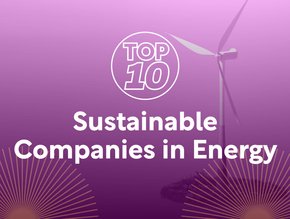Top 10 net zero and emissions barriers for heavy industry

Heavy industry companies increasingly face implementation choke points whose solutions are seldom found within a single firm or even industry.
While pledges and roadmaps are essential to jump start the net-zero transformation and to provide a long-term vision, tackling the implementation challenges faced by companies is critical to progress at the necessary pace.
Ten challenges have been identified by the World Economic Forum that will limit the transition unless solutions are found outside of business-as-usual improvements.
10: Residual emissions offsetting
For heavy industries, reaching the net-zero end goal will require substantial investments in GHG avoidance or removal projects to address residual emissions. Solutions must be found to accelerate the provision of quality offset solutions at scale in a transparent and impact.
09: Scope 3 abatement
Scope 3 emissions (e.g. estimated at around 80% of all oil and gas emissions161 and 30% of ammonia emissions) are particularly hard to measure and address. Solutions must be found to create end-to-end transparency and effective abatement solutions with suppliers and customers.
08: Supply chain circularity
Primary production generates many times the emissions of secondary/recycled production (e.g. 4 times for steel, 30 times for aluminium). Solutions must be found to adapt companies’ business models and production processes to circularity.
07: Carbon measurement and management
Measuring, monitoring or forecasting emissions different in nature and scope is complex for heavy industry firms with myriad industrial processes. Solutions must be found to help companies establish standardised transparency for effective action.
06: Transition capability building
The transformation requires heavy industry firms to integrate new, often very different, capabilities. Just and sustainable solutions must be found to rapidly upskill or reskill companies’ management and workforces to align expertise with new strategies and activities.
05: Scaling capital
Heavy industries’ low emission pilot projects require significant capital expenditure while offering less certain or immediate returns than other assets.
Solutions must be found to attract capital for investments in necessary higher risk, subeconomic projects that could demonstrate commercial scale feasibility – not only in advanced economies but also in emerging and developing economies where capital markets are less developed and the cost of capital is higher.
04: Policies and regulations enablement
Public incentives, including direct or indirect carbon pricing, subsidies or tax breaks, product use specifications or technology mandates, strongly influence the business case for low-emission investments in heavy industries. Solutions must be found to align public-private objectives while also ensuring efficiency and a just transformation; lessons exist from the growth of wind and solar energies.
03: Demand for low-emission products
Today, low-emission products in heavy industries require a high selling price for producers to maintain economic margin structures. Solutions must be found to generate reliable demand-side signals and provide visibility on offtake to reduce risks for first movers.
02: Infrastructure access
Many net-zero compatible technologies considered by heavy industries involve low-emission hydrogen (e.g. for direct reduced iron in steelmaking), renewable power (e.g. for mechanical vapour recompression in aluminium-making) or carbon capture, utilization and storage (e.g. cement plants). Solutions must be found to provide the infrastructure required for supplying these energy sources and handling captured CO2.
01: Breakthrough technologies
Most technologies to decarbonise heavy industry sectors are either yet to be proven at scale or expensive compared to current alternatives (e.g. +15-40% for low-emission steel, +50-85% for low-emission cement, +10-100% for low-emission ammonia). Solutions must be found to accelerate the technology readiness levels (scale and cost) of “clean” production processes.






